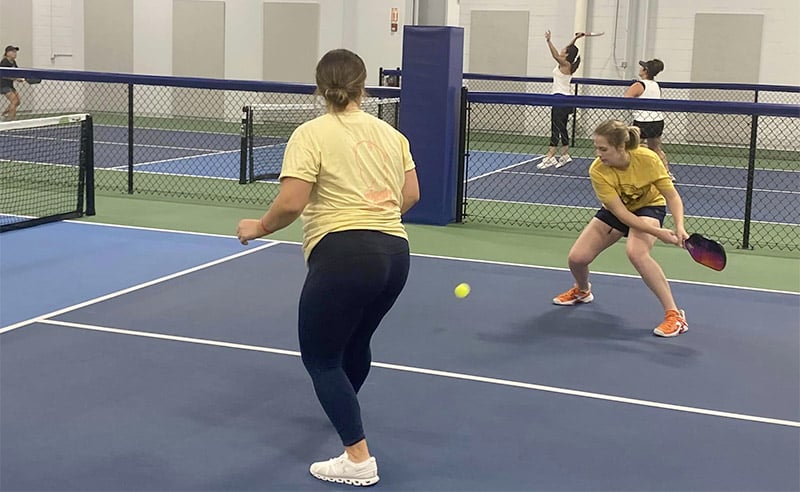Like every sport, Pickleball contains several connected rules, and breaking these at any time during a match will cause the referee to fault you.
As Pickleball grows as a sport, more people are taking an interest in learning the rules to educate themselves for if and when they take the Picketball court.
In this article, we’ll look at the common faults in Pickleball and what to do to avoid making them when you step out onto the Pickleball court.
What is a Fault in Pickleball?

A fault in Pickleball is a gameplay rule that you need to take seriously, or you’ll give away any advantage you hold on the court.
There are several of these, but here are a couple more important ones worth knowing about if you want your first appearance on the Pickleball court to be successful.
Double bounce rule
You can’t allow the ball to bounce twice before you hit it, as it’s a fault if the ball double bounces on your side of the court.
Most Pickleball beginners think that this is what the double bounce, or two-bounce rule, means, but although it is a fault, this isn’t what the rule violation is.
The two-bounce rule involves how the ball gets played once the serving team puts the ball into play.
The serve must bounce in the service court of the receiving team, but if a receiving team member hits the ball without a bounce, it is deemed a fault in Pickleball.
The two-bounce rule’s final clause concerns the return by the receiving team.
If you return the ball over the net, it must hit the court of only the serving team before they can return it, so neither team is allowed to volley the ball until it has gone over the net twice during a single point.
Should either team do this, the referee will fault the guilty team.
You also cannot legally allow your momentum to take you into the no-volley zone or even onto the volley zone line while volleying a ball, or the referee will call an automatic fault.
Foot Fault rule
Foot faults in Pickleball occur in several instances.
Like in tennis, you’ll commit service foot faults if you continually step on the service line or inside the baseline during the serving process.
You cannot touch the court’s sideline while completing a service and can’t be airborne during a serve – at least one of your feet must be on the court surface (outside the service line) throughout the service action, or the officials will call service faults.
The more complex foot fault rule concerns the non-volley zone line or kitchen line.
When you hit a volley shot, if you or any part of your paddle or clothing touches the non-volley zone or the non-volley line, these are deemed faults in Pickleball.
If you want to hit the ball inside the kitchen or non-volley zone, you must let the ball bounce first for your shot to be legal.
What is a fault in Pickleball doubles play?
Specific rules differ when you play doubles instead of singles play in Pickleball.
You share your side of the court with a partner and take turns serving, but those aren’t the only differences.
You should be aware of some rules in doubles, especially concerning serving.
In Pickleball, as the serving team, you can commit two faults before losing your service.
Every time your team commits a fault or loses the ball to the opposing team, you and your partner must switch sides.
This process continues as the match goes on, applying to both teams.
Sometimes the wrong serving team member serves accidentally, and this causes an immediate service fault call, with the rule applying whether or not the team member actually hits the ball.
It makes sense to watch your opposition to make sure the right person is serving.
A referee will likely pick this up, but it’s not sure that they will.
FAQs
If you play a ball already out of bounds, can you be called for a fault in a Pickleball game?
When you hit a ball that’s already out of bounds, it’s already been a dead ball, so the fault was made by the team that hit the ball out of bounds.
Hitting the ball out of bounds on a Pickleball court means that the ball is immediately dead.
Who calls a non-volley fault in Pickleball?
In an unofficial Pickleball game, any player participating can call a non-volley fault.
In an officiated Pickleball game, the officials make every call and rule on each rule violation.
Is a Pickleball fault called if your paddle touches the court?
The only time a Pickleball fault occurs when your paddle touches the court is if it happens within the non-volley zone while hitting a volley.
Your paddle also can’t make contact with the net or net post either.
